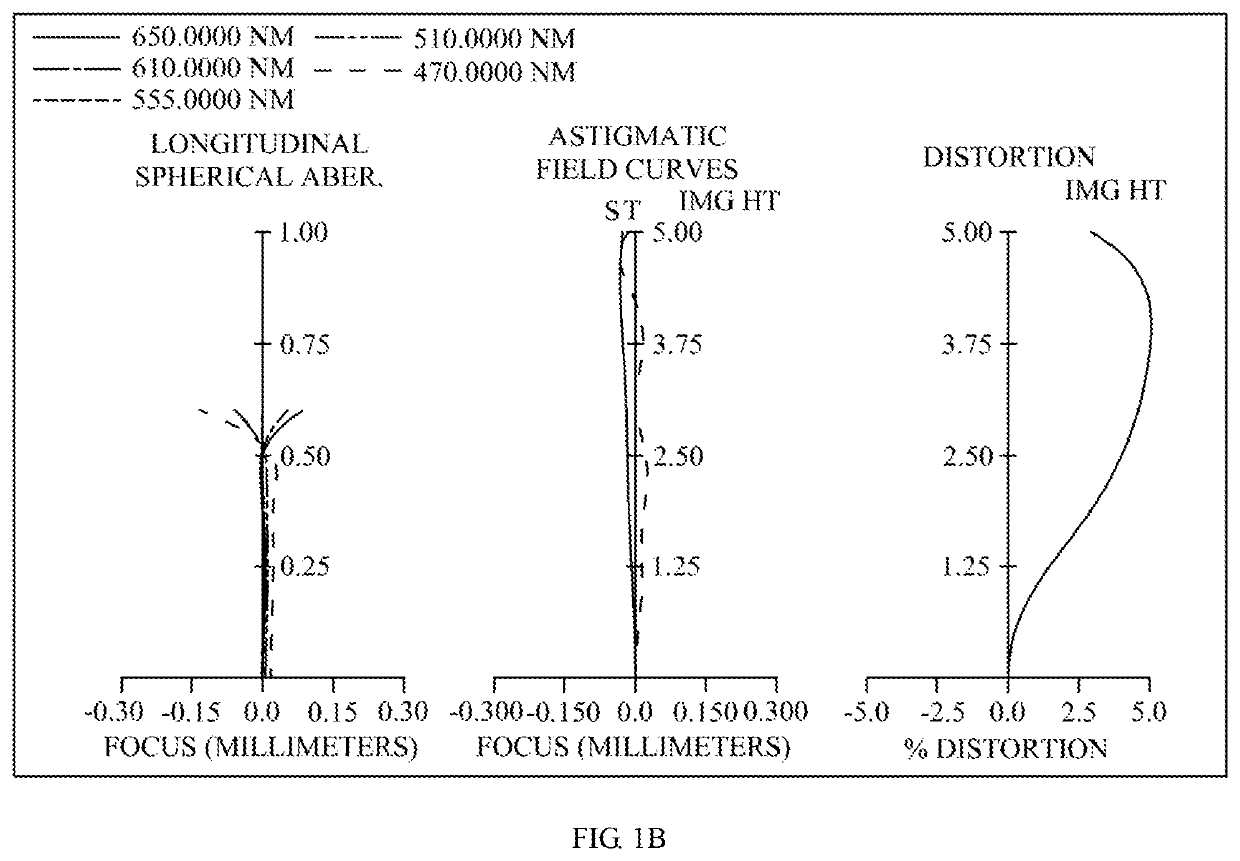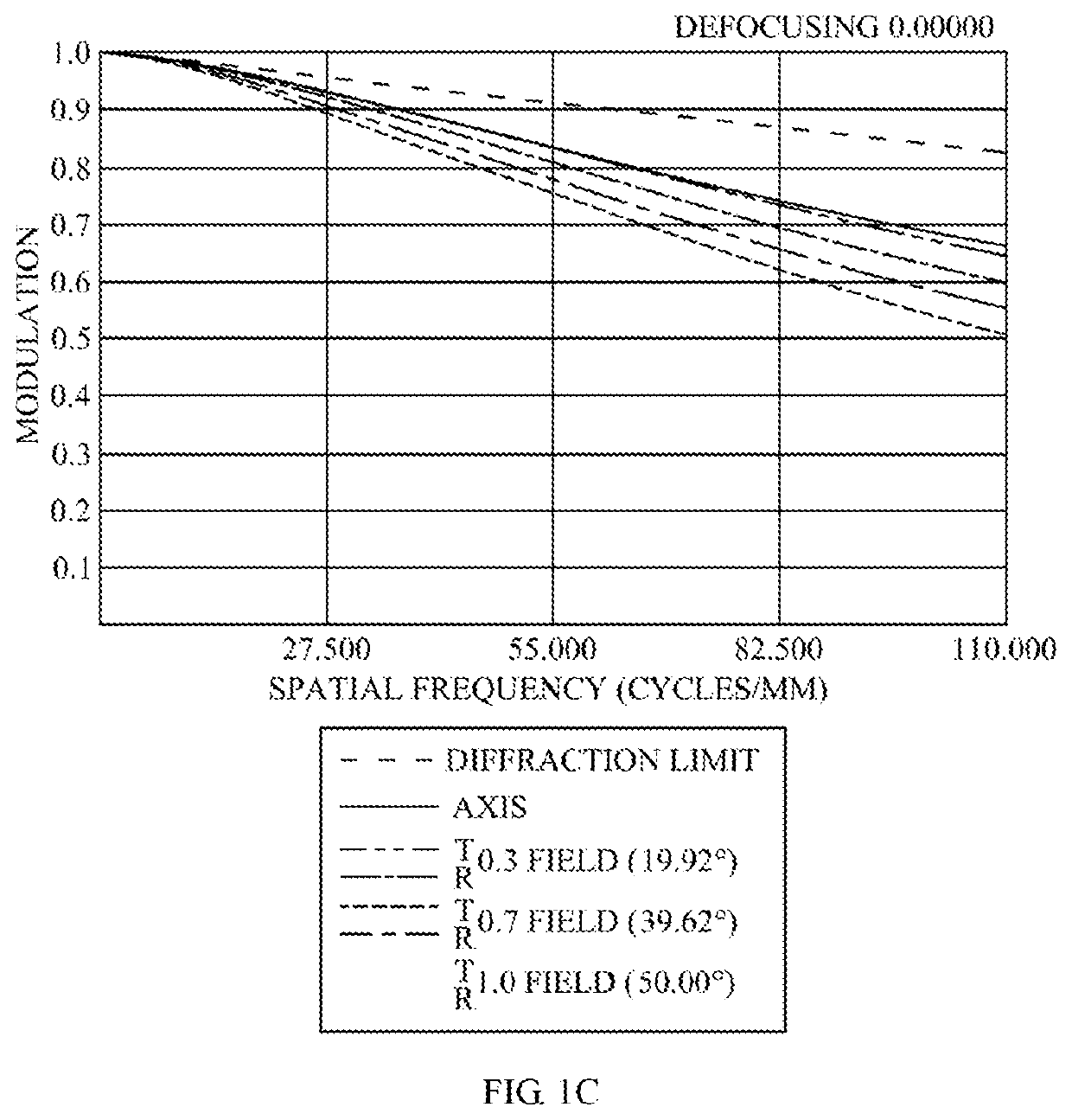Six lens optical image capturing system having visible and infrared image planes
an optical image and image plane technology, applied in the field can solve the problems of conventional optical systems which cannot provide higher optical performance, and achieve the effects of reducing the height of the optical system, enhancing the capability of aberration correction, and improving the accuracy of optical image capture systems
- Summary
- Abstract
- Description
- Claims
- Application Information
AI Technical Summary
Benefits of technology
Problems solved by technology
Method used
Image
Examples
first embodiment
The First Embodiment
[0116]Please refer to FIG. 1A and FIG. 1B, wherein FIG. 1A is a schematic view of the optical image capturing system according to the first embodiment of the present invention and FIG. 1B shows the longitudinal spherical aberration curves, astigmatic field curves, and optical distortion curve of the optical image capturing system in the order from left to right according to the first embodiment of the present invention. FIG. 1C is a characteristic diagram of modulation transfer of a visible light according to the first embodiment of the present invention. FIG. 1D is a diagram showing the through focus MTF values (Through Focus MTF) of visible light spectrum at the central field of view, 0.3 field of view, and 0.7 field of view of the first embodiment of the present invention. FIG. 1E is a diagram showing the through focus MTF values of infrared light spectrum at the central field of view, 0.3 field of view, and 0.7 field of view of the first embodiment of the pre...
second embodiment
[0189]Please refer to FIG. 2A and FIG. 2B. FIG. 2A is a schematic view of the optical image capturing system according to the second embodiment of the present invention. FIG. 2B shows the longitudinal spherical aberration curves, astigmatic field curves, and optical distortion curve of the optical image capturing system of the second embodiment, in the order from left to right. FIG. 2C is a characteristic diagram of modulation transfer of a visible light according to the second embodiment of the present invention. FIG. 2D is a diagram showing the through focus MTF values (Through Focus MTF) of visible light spectrum at the central field of view, 0.3 field of view, and 0.7 field of view of the second embodiment of the present invention. FIG. 2E is a diagram showing the through focus MTF values of infrared light spectrum at the central field of view, 0.3 field of view, and 0.7 field of view of the second embodiment of the present invention. As shown in FIG. 2A, in the order from the o...
third embodiment
[0205]Please refer to FIG. 3A and FIG. 3B. FIG. 3A is a schematic view of the optical image capturing system according to the third embodiment of the present invention. FIG. 3B shows the longitudinal spherical aberration curves, astigmatic field curves, and optical distortion curve of the optical image capturing system, in the order from left to right, according to the third embodiment of the present invention. FIG. 3C is a characteristic diagram of modulation transfer of a visible light according to the third embodiment of the present invention. FIG. 3D is a diagram showing the through focus MTF values (Through Focus MTF) of visible light spectrum at the central field of view, 0.3 field of view, and 0.7 field of view of the third embodiment of the present invention. FIG. 3E is a diagram showing the through focus MTF values of infrared light spectrum at the central field of view, 0.3 field of view, and 0.7 field of view of the third embodiment of the present invention. As shown in F...
PUM
 Login to View More
Login to View More Abstract
Description
Claims
Application Information
 Login to View More
Login to View More - R&D
- Intellectual Property
- Life Sciences
- Materials
- Tech Scout
- Unparalleled Data Quality
- Higher Quality Content
- 60% Fewer Hallucinations
Browse by: Latest US Patents, China's latest patents, Technical Efficacy Thesaurus, Application Domain, Technology Topic, Popular Technical Reports.
© 2025 PatSnap. All rights reserved.Legal|Privacy policy|Modern Slavery Act Transparency Statement|Sitemap|About US| Contact US: help@patsnap.com



